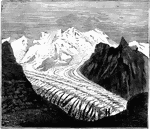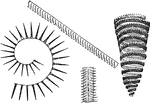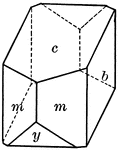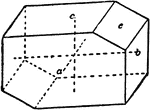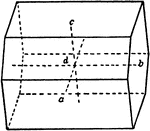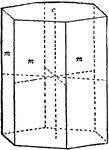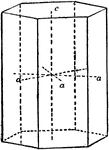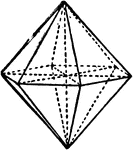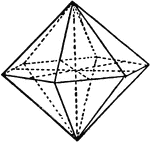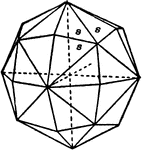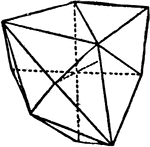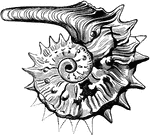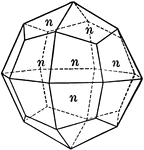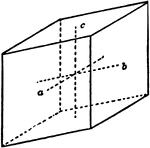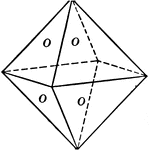
Quartz Geode
"A concretionary stone or pebble, hollow inside, and often having the walls of the cavity lined with…
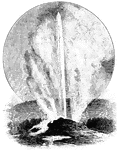
Geyser in Eruption
Geysers are boiling springs which, at intervals more or less regular, shoot out huge columns of water…

Goethite
Goethite is a mineral composed of an iron hydrate crystallizing in soil and other low temperature environments.
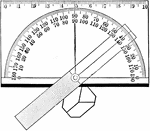
Contact Goniometer
"An important part of the study of crystallography consists in the measuring and classifying of the…

Granite Section
"Section showing Granite nucleus, with strata lying on its flanks, the overlapping and continuous portions…

Graptolites in Stone
"Block of Stone containing Graptolites. GRAPTOLITE. A specimen or a species of Paleozoic coelenterate…
Groundwater Position
"Diagram illustrating the position of the groundwater surface (the dotted line) in a region of undulating…
Groundwater Source
The diagram shows the source of groundwater: water falls into porous ground (a), flows underground to…
Gypsum
"Monoclinic. Crystals usually tabular parallel to clinopinacoid; in diamond-shaped crystals with edges…
Gypsum
"Monoclinic. Crystals usually tabular parallel to clinopinacoid; in diamond-shaped crystals with edges…

Hematite
"Hexagonal-rhombohedral. Crystals usually thick to thin tabular. Basal planes prominent, often showing…
Hematite
"Hexagonal-rhombohedral. Crystals usually thick to thin tabular. Basal planes prominent, often showing…
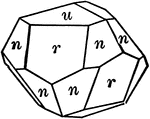
Hematite
"Hexagonal-rhombohedral. Crystals usually thick to thin tabular. Basal planes prominent, often showing…
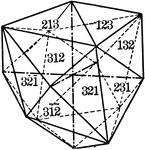
Hexakistetrahedron
"The faces of the hexakistetrahedron correspond to one-half the faces of the hexoctahedron." —…

Hexoctahedron
"The hexoctahedron is a form composed of forty-eight triangular faces, each of which cuts differently…
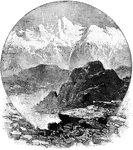
Himalaya Mountains
The Himalayas, the loftiest mountains in the world, rise abruptly form the plains of Northern Hindustan.

Laccolith
"Conduit of Tilford laccolith, showing porphyry (P) breaking across limestone (L)." -Walcott, 1901

Lingula Antigua
The Lingula antigua is a little bivalve shell belonging at the bottom of the class Brachiopoda. The…
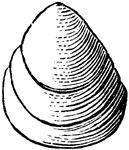
Lingula Prima
The Lingula prima is a little bivalve shell belonging at the bottom of the class Brachiopoda. The inarticulate…
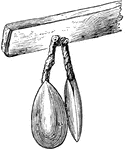
Modern Lingula
Lingula is a genus of brachiopods within the class Lingulata. Lingula is among the few brachiopods surviving…
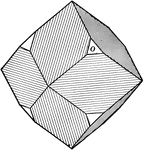
Magnetite
"Isometric. Octahedral habit, sometimes twinned octahedrons. Dodecahedron at times, either alone or…

Marcasite
"Orthorhombic. Crystals commonly tabular parallel to basal plane, showing also short prisms and low…
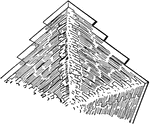
Marcasite
"Orthorhombic. Crystals commonly tabular parallel to basal plane, showing also short prisms and low…
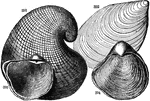
Mesozoic Mollusks
Four varieties of mollusks from the Mesozoic time: "391, Exogyra costata; 392, Inoceramus problematicus;…

Goniatites Mollusk Fossil
An ancient mollusk from the Paleozoic time, Goniatites Marcellensis from the Hamilton group.
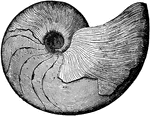
Goniatites Mollusk
An ancient mollusk from the Paleozoic time, Goniatites Marcellensis from the Hamilton group.
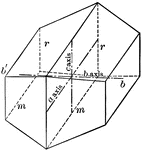
Crystal of the monoclinic system
"A crystal form does not necessarily make a solid figure. One such an example is this, of the Monoclinic…
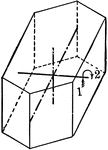
Symmetry of monoclinic system
"The symmetry of the Monoclinic System is as follows: The crystallographic axis b is an axis of binary…

Mount Vesuvius
The parts of a volcano illustrated with Mount Vesuvius: "a, the cone; b, summit cinder-cone; c, Somma,…

Mountain Rupture
"Rupture of a Mountain.—There is no doubt, but in the operations of nature, great effects are…

Nitrogen Cycles and Litter Disposal
"Schematic of nitrogen cycling associated with litter disposal on broiler farms." -Hatzell, 1995

Symmetry of normal class
"The symmetry of the Normal Class of the Hexagonal System is as follows: The vertical crystallographic…
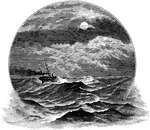
Ocean Wave
Waves are swimming motions of the water, caused by the action of the wind. Their height and velocity…


